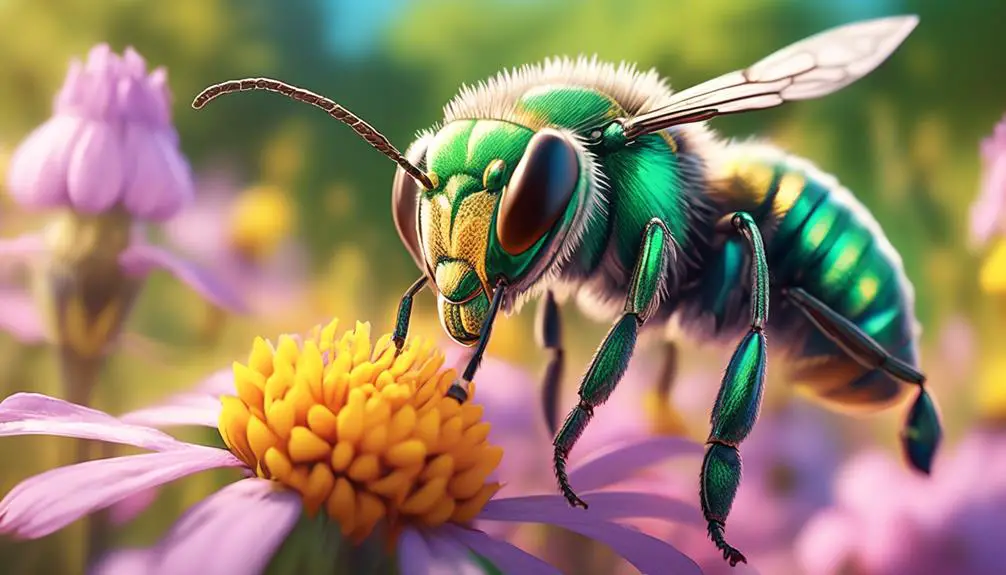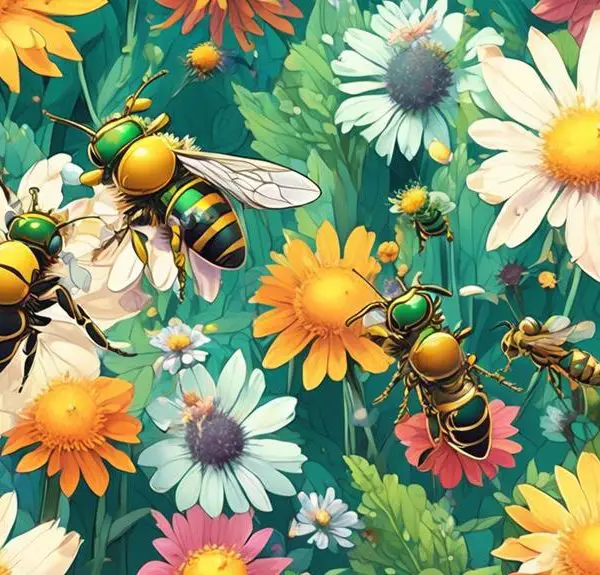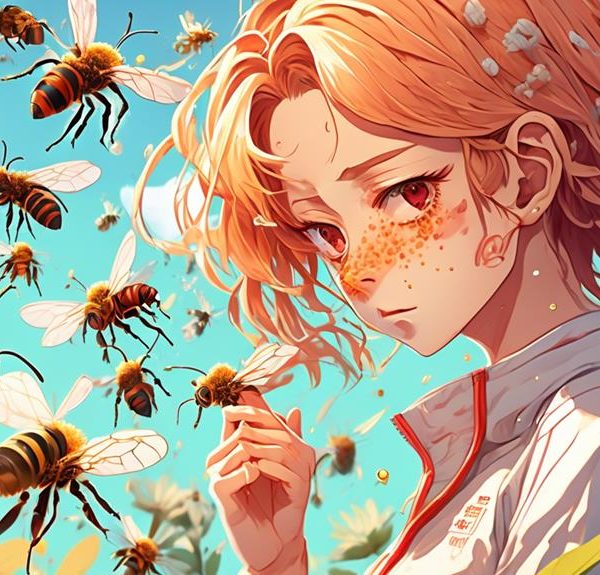Curious about the tiny powerhouses aiding Oklahoma's ecosystem? Discover the surprising role of sweat bees in your garden's health.

Sweat Bees Oklahoma
Contrary to popular belief, not all bees are a nuisance, and sweat bees in Oklahoma are a testament to this. You might be thinking, 'Why should I care about sweat bees?'
Well, these tiny, often overlooked creatures play a crucial role in our ecosystem, particularly in maintaining the health of our gardens. As pollinators, they're indispensable to the growth of fruits and vegetables, and despite their name, they're not primarily interested in your sweat. They're mostly harmless and very unlikely to sting unless threatened.
So, why not stick around to learn more about their surprising benefits and how to coexist peacefully with these hardworking insects?
Key Takeaways
- Sweat bees are important pollinators in Oklahoma's ecosystem, playing a crucial role in maintaining the health and diversity of local flora.
- They are non-aggressive and their sting is not dangerous unless you're allergic.
- Sweat bees face threats from habitat loss, pesticides, and climate change, making their protection crucial for ecosystem sustainability.
- Minimizing attractants, creating bee-friendly zones, using natural repellents, and seeking environmentally friendly pest control methods can help manage sweat bees at home without harming them.
Understanding Oklahoma's Sweat Bees

While you may not be familiar with them, sweat bees are a fascinating part of Oklahoma's diverse ecosystem. They're not your typical bees, and they've got a few tricks up their sleeves. You see, sweat bees are smaller than honeybees, and they're attracted to human perspiration, which is where they get their name. They're also solitary creatures, unlike their hive-dwelling counterparts.
As you walk through Oklahoma's wildflower meadows, you're likely to see these tiny bees buzzing around. They're essential pollinators, playing a vital role in maintaining the health and diversity of local flora. Without them, many plants wouldn't be able to reproduce.
Despite their importance, sweat bees are often overlooked. They don't produce honey or wax like other bees, but they're just as valuable. They're also non-aggressive, and while their sting can hurt, it's not dangerous unless you're allergic.
The Lifecycle of Sweat Bees

To truly appreciate these tiny creatures, let's delve into the lifecycle of a sweat bee.
- Egg: The journey starts when the female sweat bee lays her eggs in underground burrows. You'd be surprised to know that unlike honey bees, each sweat bee female is often a solitary queen of her own nest.
- Larvae: The eggs soon hatch into hungry larvae. The mother bee has already gathered a mix of pollen and nectar, known as bee bread, to nourish her offspring.
- Pupa: After feasting on the bee bread, the larvae spin cocoons around themselves and enter the pupa stage. Here, they undergo a remarkable transformation, developing wings, eyes, and all the other features they'll need as adult bees.
- Adult: Finally, the mature sweat bees emerge. They're ready to forage, mate, and continue the cycle.
That's a brief glimpse into the fascinating lifecycle of sweat bees.
Sweat Bees and Ecosystem Balance

Having journeyed through the lifecycle of sweat bees, let's consider how these industrious insects play a pivotal role in maintaining the ecosystem balance.
You see, sweat bees are vital pollinators. They're drawn to the salts in human sweat, but their real job is flitting from flower to flower, dusting themselves with pollen.
When they visit the next flower, they inadvertently transfer some of that pollen, enabling fertilization. This leads to the production of fruits, seeds, and new plant growth. So, sweat bees are key players in food production, not just for humans, but for many wildlife species too.
But here's the kicker. Their role doesn't stop there. Sweat bees also serve as a food source for various birds and insects. This makes them a crucial link in the food chain.
Unfortunately, like many other pollinators, sweat bees face threats from habitat loss, pesticides, and climate change. If their populations decline, it disturbs the natural balance.
Dealing With Sweat Bees at Home

If you're noticing a swarm of sweat bees in your backyard, it's important to take action without harming these crucial pollinators. These tiny bees play a vital role in our ecosystem, so it's essential to handle the situation delicately and responsibly.
Here's how you can manage sweat bees at home:
- Minimize Attractants: Sweat bees are drawn to sweat, so if you're working outdoors, try to wipe away sweat regularly and wear light-colored clothing. They're also attracted to sweet liquids and strong smells, so keep food and drinks covered.
- Create a Bee-Friendly Zone: Dedicate a part of your yard to native plants that sweat bees love. This will draw them away from your living areas.
- Use Natural Repellents: Essential oils like peppermint and citronella can deter sweat bees. Mix these oils with water and spray around your outdoor seating areas.
- Professional Help: If the situation becomes overwhelming, don't hesitate to call a pest control professional who practices environmentally friendly methods.
Protecting Sweat Bees for Sustainability

While managing sweat bees at home is important, it's equally crucial to focus on their protection for the sake of our ecosystem's sustainability. You mightn't know it, but sweat bees play a key role in pollinating our local plants. That's a job we need them to keep doing.
So how do you protect these hard-working insects? Start by providing a bee-friendly habitat. Avoid using pesticides in your garden, as these can harm not only sweat bees but many other beneficial insects as well. Instead, plant native flowers and plants that the bees are naturally attracted to.
Next, consider building a bee box. It's a simple construction that provides a safe place for the bees to nest. You can find many DIY guides online to help you with this.
Conclusion
So, you're now an expert on Oklahoma's sweat bees. You understand their lifecycle and importance to our ecosystem.
Sure, they can be a nuisance at home but there are ways to manage that.
More importantly, remember, protecting these little pollinators is vital for our environment's sustainability.
Keep sharing the love for these tiny, hard-working bees. After all, they're just doing their job and trying to survive, just like us.


